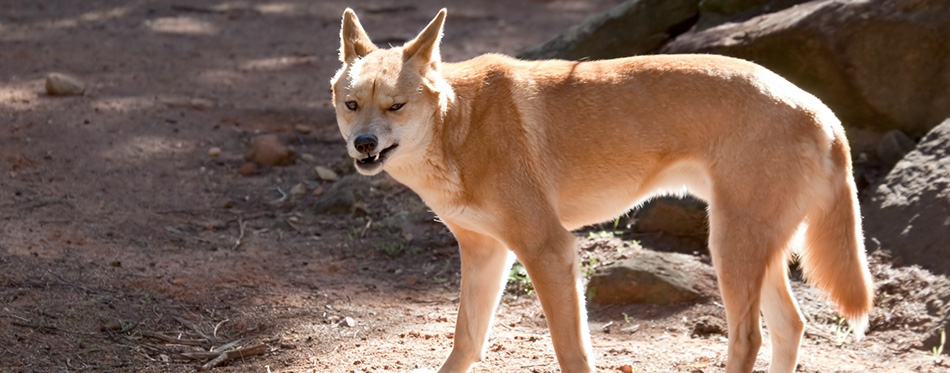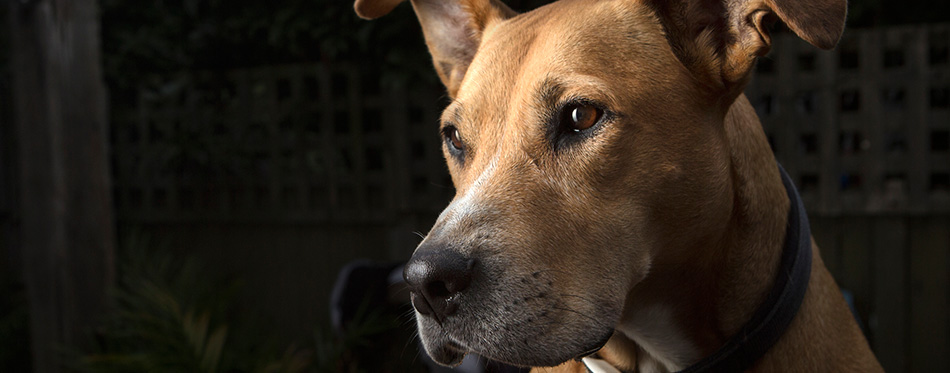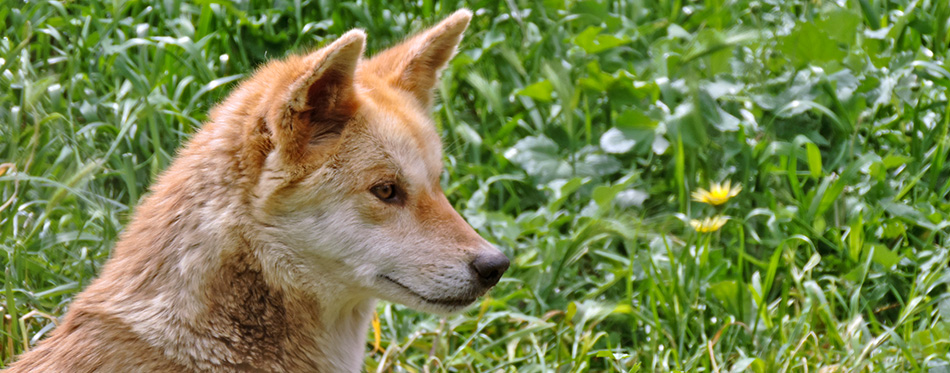The American Dingo has incredibly adjusted to the modern family life, despite the fact that it was only domesticated some decades ago. The breed which is also popularly referred to as the Carolina Dog, initially roamed the wilds of America, but today, they have become part of many local homes, and with steady training sessions from their puppy age, they have turned into excellent pets, though many of them are habitually timid and look on new people with a lot of suspicion.
The breed requires a very high level of exercise, which is the reason it benefits from a vigorous outdoor life. Their nature demands that they are reared in a pack of dogs if possible, and they can be quite difficult because of their bright disposition. Training sessions for the Carolina Dog doesn’t come easy and is best handled by a professional dog trainer or owner who devotes quality time to train and exercise them. Besides, as they have survived without human impute for a very long time, The American Dingo has the propensity to be a tough breed with very little health issues.

History of the American Dingo (Carolina Dog)
The history of the American Dingo is a fascinating one; In fact, the breed was only domesticated a few decades ago. It is generally believed that they owe their origin to ancient dogs belonging to Native Americans, but they were first spotted in South Carolina as well as its neighboring state, Georgia in the US. According to a 1920 article published by Glover Morrill Allen – a zoologist of American origin, the supposed Indian dogs were described as “Dogs of the American Aborigines.” The general belief at that time was that the Indian dogs were actually the Carolina Dogs. In his submissions, Allen opined that the Indian dogs descended directly from primitive Asian dogs that found their way into America with the advent of man’s great voyage to east and west.
However, the credit for the rediscovery of the Carolina dogs goes to I. Lehr Brisbin, Jr. who works with the University of Georgia, precisely at their Savannah River Ecology Laboratory. Important to note that Brisbin was a senior research ecologist at that time, he identified the free-ranging Carolina Dogs as evidence from their DNA established that the dogs had one, out of three universal haplotypes which are known to be clusters of alleles that the breed inherited from one of their parents.
Out of every 20 Carolina Dogs, you will get one with ancestral roots in either Korea or Japanese. Statistics have shown that 58 percent of this breed of canine comes with general haplotypes, which points to the fact that they have a lot in common with many other species of dogs found all over the globe. Further research revealed that 37 percent of the American Dingo breed are born with haplotypes that have never been identified; neither has it been recorded in the past. According to analysts who specialize in Dog DNA, this particular sub haplogroup carry the lineage of dogs of East Asian origin. Check out our guide on DNA tests for dogs for more info.
Going by this information, it is completely safe to believe that the Carolina breed descended from the Asian Pariah dogs which were introduced into the United States during the ancient era, which experts have estimated to be around 7,000 to 20,000 years ago. The universal compromise is that the original Pariah dogs later learned to acclimatize to the environmental conditions and ultimately the climate of South America.
In total support of these facts are some archeological findings of several mummified skeletons and remains of the canine population, along with numerous artifacts which appeared to belong to ancient Indians that existed in the Southwest. There were also other findings of canine remains in the forest of the Southeastern parts that typified ceremonial burials. The general belief is that these dogs were used by the Native Americans as companion animals, lending credibility to the fact that American Dingo breed is an ancient dog. Although it is believed that several of the Asian pariah breeds were ultimately domesticated, we still get to see many that are still regarded as free-range or wild. This is the exact kind of pariah dogs that were encountered by Brisbin during his research project at the Savannah River Site.
In a bid to ensure that the primitiveness of the American Dingo is preserved, fanciers have taken it as a duty to facilitate the movement towards the breed’s standardization. To date, the Carolina Dingo breed is already on the list of Foundation Stock Service of the AKC, and this is believed to be one of the essential initial steps towards the full official recognition of the breed. However, since 1996, the United Kennel Club has already given considerations to the American Dingo as an official breed and have also published the breed’s standards.
According to submissions by the United Kennel Club, the Carolina Dog or American Dingo is listed under the category of the organization’s Pariah and Sighthound. Meanwhile, The AKC has gone ahead to list the dog under the Hound category while they patiently await breed recognition. Another association that has recognized the Carolina Dog breed is The American Rare Breed Association. They also see them as an official breed, categorizing it under group five, alongside the Canaan dog and the New Guinea singing dog.
Quick Facts About the Carolina Dog
Before now, it was rather difficult to distinguish an American Dingo from several other ferals or wild dogs. However, because of the considerable effort to get the breed standardized, identification is becoming a whole lot easier. Read on to get all the important facts about the Carolina Dog;
- Apart from Carolina Dog, the breed of canine is also identified by several other names like; American Dingo, Dixie Dingo, Yellow Dog, Indian’s Dog and Yeller Dog. Its other names include Ol’ Yeller and North American Native Dog.
- Talking about the breed’s body statistics, their heights range from 17 to 24 inches, but according to the foundation standards of the AKC, it goes from 17.5 to 19.5. The general bodyweight says 30 pounds at the least and 40 at most. However, AKC’s limit, which is a bit higher, is pegged at 55lbs.
- The dog breed is known to live long with the minimum life expectancy pegged at 12 years, but they don’t exceed the max of 15 years.
- Their coat has been described as wolf-like, and in the winter, it tends to come up with a dense and thick undercoat (winter coat). Furthermore, their coats are known to shed heavily according to the seasons.
- The coat can come in a variation of colors – we have seen tan, beige, orange, yellow, red sable as well as red ginger. The generally preferred color is the later; however, it usually has extra pale buff patterns or markings on the dog’s shoulders and on the side of its muzzle. Paler shadings are visible on the breed’s throat, chest as well as underside.
- This breed of canine is known by triangular-shaped head and muzzle which seamlessly blends with the dog’s face. The color of their nose is dark black with the nostrils wide open. Its almond-shaped pair of eyes are rather very expressive and come with brown color. Coming to the chest, it is relatively narrow with well tucked in tommy. The size of their paws is moderately large with long legs.
- The American Dingo’s long ears and bushy, hooked tail are extremely expressive as both are known to move from one position to the other according to the dog’s mood.
- Although the American Dingo’s coat is short, it is extremely thick, and there is the possibility that it comes with an undercoat.
- Guard hairs are visible on the breed’s neck, withers, and back.
- The American Dingo can be distinguished by its distinctive “fishhook” tail; which can never come slack or loose.
- Just like the ears of the German Shepherd, the breed’s ears stand straight on top of the dog’s head.
- Other distinguishing features of the American Dingo are a muscular body, well-tucked-up tummy as well as well-developed chest. The size of the back is considered medium, and it comes straight.
- The dog’s usual expression is best described as alert; however, the canine’s eyes can convey intelligence and softness.

Things You Should Know About American Dingo
Here are a few aspects to know about the American Dingo;
Health
Normally, the life expectancy for the American Dingo ranges from 12 to 15 years, and taking its lifespan into consideration; it becomes glaring that the breed is generally a strong and healthy one, with no trace of any congenital or hereditary disease seen in their lineage so far. They have a natural resistance to many dog diseases and are not susceptible to elbow dysplasia, hip dysplasia, and patellar luxation. They have also been observed to be resistant to ear, eye and skin ailment which is rather common in a majority of other domestic breeds of the canine population.
However, this is not to say that the Carolina dog has complete immunity to every possible canine health issues. Just like all other species of dogs, the breed needs extensive vaccination against distemper. There is also the need to treat them against all forms of parasite that afflict dogs, both the external ones like ticks, fleas, and mites as well as internal ones like tapeworms, normal worms, and heartworm. Because of the aforementioned reasons, you need to make your purchase of Carolina Dog puppies only from reputable breeders, especially the kind that can furnish you with every essential health clearance for the parents of the particular puppy you are interested in buying. It is also the duty of the breeder to give you access to all certificates verifying that the puppy has gone through the necessary vaccinations and has received proper treatment against all canine-related parasites. Though they don’t suffer from any major health issues, the Carolina Dogs are still living creatures which can be affected by unwanted health problems. The breed should be subjected to regular inspection, and the vets should be consulted for any anything suspicious.
Training
In the same way as all other semi-domesticated dogs, it is very challenging to train the American Dingo, and because of its primitive nature, the breed is quite stubborn and independent. So it is not the best breed for novice trainers or owners. This does not mean that the Carolina Dog Breed comes with low IQ, the dog is highly resourceful, intelligent as well as thoughtful, with the capacity to proffer solutions to problems without any human help. After all, the dog has learnt self-sufficiency from life in the wild. So, the only problem you are likely to encounter with the breed is finding the right motivation for the training sessions. You need to make them understand that it is actually beneficial to them. To get the better of the situation, here are a few important rules which you must adhere to;
- The training sessions start immediately after you acquire the dog.
- Pack leaders with gentle hands are the best trainers for the breed.
- Consistency is required, thoroughness and firmness are necessary but you need to be exceptionally calm, patient as well as respectful.
- While you are working with the breed, you should avoid using cruel and harsh methods like bullying and shouting at the dog. This has been found to have severe consequences on the mental health of dogs.
- Recommendations are that dog trainers should go for the positive reinforcement method or technique with loads of treats and praise.
- Duration of the lessons should be brief, half an hour is quite ok, and besides, it should be fascinating, but it can never be repetitive to avoid boredom.
Exercise
Because they come with rather high energy level, the American Dingo needs some positive as well as constructive outlets to channel the energy into. Exercise is the solution, and if not properly done, you will observe several infuriating bad behaviors from your dog. The negative behavior can come in the form of digging, chewing, incessant barking, jumping over or on top of things, and shredding things around their vicinity. The hound is a natural hunter, and because of this, it requires enough activities, especially to cater to the joints and muscles.
Nutrition
The daily intake of a healthy 40-lb American Dingo should be like 1000 to 1100 calories per day. But this can only be sufficient for hounds with average activity levels. However, the quantity should be increased for hounds with a high activity level. Those that prefer their Carolina Dog as a lap dog can reduce the calorie content of their diet. You need to watch their weight as many dogs can easily get overweight.
High-quality dog food is necessary for the American Dingo, and also, high-quality raw food that is safe is the best, since it has a close resemblance to the type of food they are exposed to in the jungle. If your preference runs to commercial dog food, avoid the type with plenty fillers like soy, corn, and wheat. You should also avoid some food that fronts by-product meals and carbohydrates as the initial ingredient. What your dog need is healthy fats and animal proteins of high-quality. Vegetables and fruits are perfectly ok, provided it does not constitute the majority of their meal.
Related Post: High Protein Dog Food

Grooming
As a result of its short coat, the American Dingo is very easy to groom; besides, the breed is known to take care of its grooming needs. Brushing should be done on a weekly basis to evenly distribute its natural skin oil. However, brushing can be increased while they are experiencing seasonal shedding if not, your home will be covered with dog fur.
The nails should be trimmed as at when due, while dental hygiene can be observed on a daily basis if possible. But, if it proves too stressful, you can do it two times a week. As for the ears, they should be checked and cleaned on a weekly basis.
Check out some of the dog grooming guides, such as dog toothpaste, dog toothbrush, dog nail clippers, dog clippers, dog shampoo, and dog ear cleaner.
Temperament
The Carolina Dog breed is known to be resourceful as well as intelligent and has existed for thousands of years. While there are still unanswered questions about its origin, it is undeniably one of the most tough and resilient breeds. When suitable trained and socialized, it can turn out to be an affectionate and loyal pet. At first, they are generally shy; however, once they come to accept their human family, their loyalty and devotion tend to be rather fierce.
The Breed is particularly fond of children, but you should try not to leave them alone with smaller kids because of its high energy level which is rather risky for toddlers. As the dog still remains a hunter at heart, it has reservations towards strange faces. Though it doesn’t show aggression or hostility towards other animals, it is capable of giving voice to its displeasure. The American Dingo may not enjoy popularity like other breeds like the GSD or Labrador, several reasons exist why it should be regarded as a top hound, and having survived in the wild for thousands of years is surely commendable.
Source:
- Carolina Dog – AKC

